When we talk about optics, often time people focus on the specific type of optic…
Red dot, prism, LVPO, scope…you get the idea.
But in reality, when building out your firearm, it’s not just about the optic itself.
It’s also important to think about the weapon system you’re placing it on too.
A red dot on a long-range rifle makes about as much sense as a high-powered scope on a pistol caliber carbine.

The wide world of optics is chock full of options. So how do you know what optic is best for your platform and shooting application?
Don’t worry, we got you, fam.
Today, we’re going to focus on the popular AR-15 platform, and similar rifles, to nail down the kind of optics you can expect to see paired with an AR.
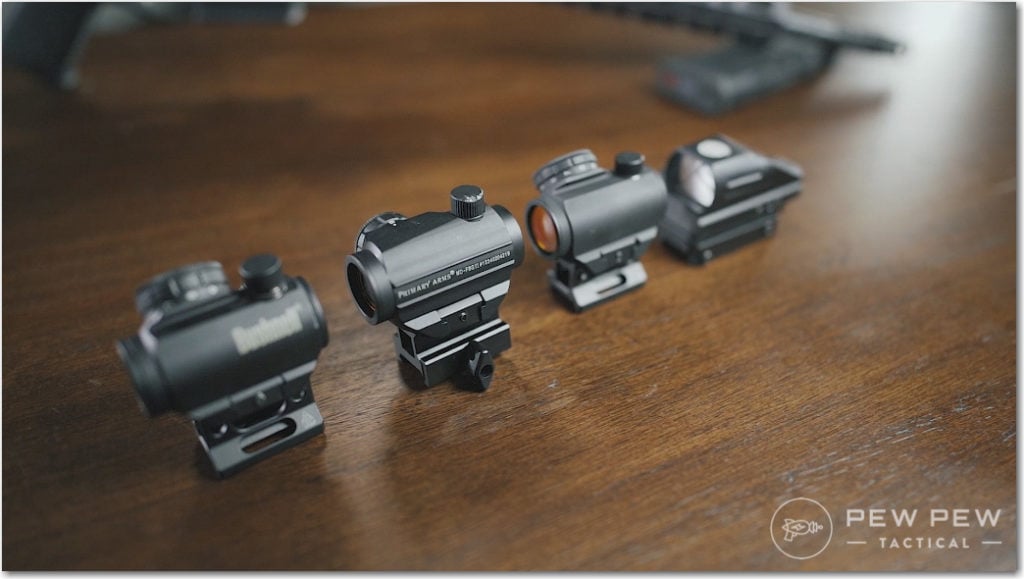
In specific, we’ll examine the three most popular optics on these types of rifles — red dots and magnifiers, fixed power prism scopes, and low powered variable optics.
By the end, you should know the difference between these styles and which one is best for what you need from your rifle.
Let’s dive into them!
Table of Contents
Loading…
Red Dots With Magnifiers
Red dots are pretty popular and that’s because they work on everything.
Rifles, shotguns, handguns…you name it, there’s a red dot for it!
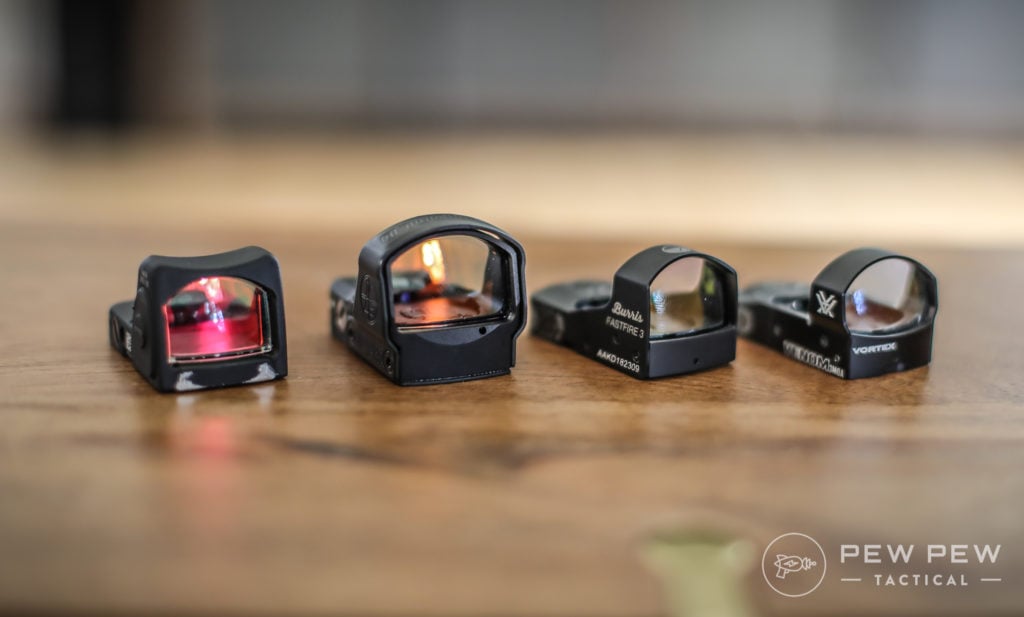
Red dots are small, ultra-lightweight, and very easy to use and come in all sizes.
Want a full-size rifle red dot? Check out the Aimpoint Comp M4.
Need a miniature red dots for a smaller PCC? Look at the Trijicon RMR.
Prices accurate at time of writing
Prices accurate at time of writing
-
25% off all OAKLEY products - OAKLEY25
Copied! Visit Merchant
Red dots are great for newer shooters. I teach new shooters with red dots over irons because they are really easy to use.
Put the red dot on the target and pull the trigger. It doesn’t get simpler than that.
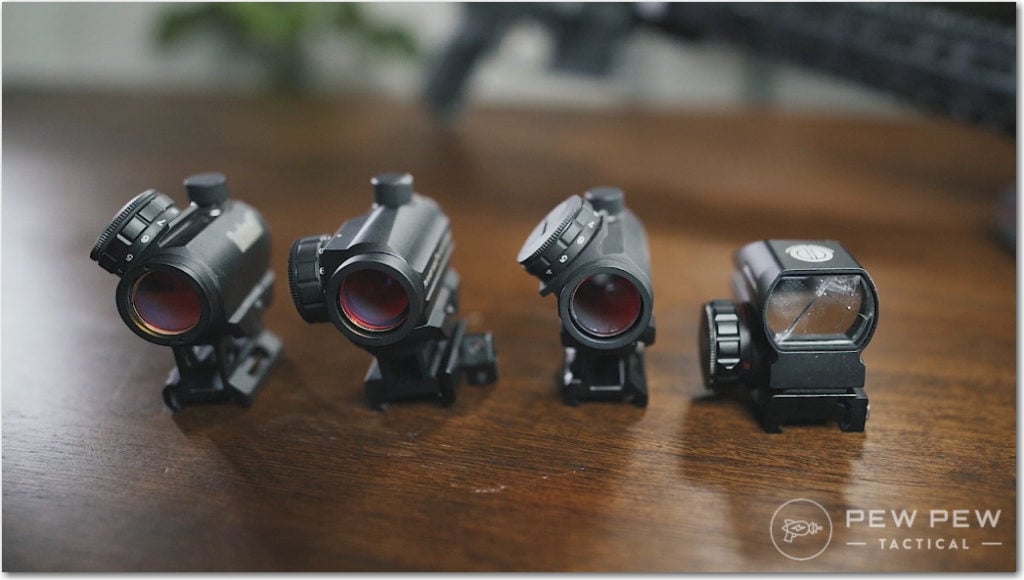
What range are red dots best for?
These optics are close-range masters.
Inside a house or a building, I’d take a red dot at any time. When things are fast and close, simpler is the better.
The illuminated reticle works 24 hours a day.
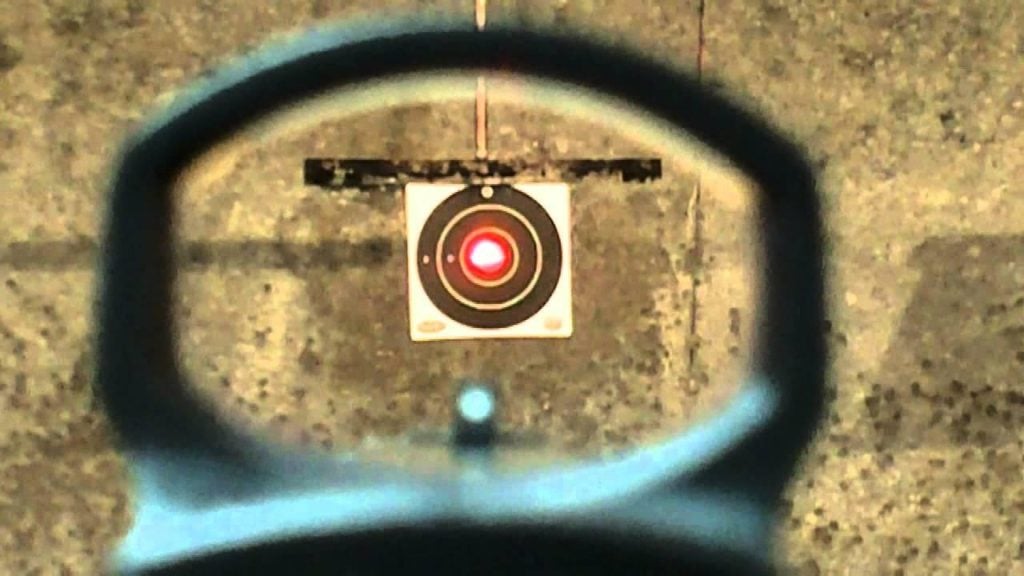
Their small size is also beneficial for small guns.
You can pick a compact model like the Romeo5 from SIG or the Aimpoint T1 and tack it on a Mini Scorpion with room left over.
A smaller, lightweight optic like a compact red dot is great for these miniguns since they keep the weight down!
Prices accurate at time of writing
Prices accurate at time of writing
-
25% off all OAKLEY products - OAKLEY25
Copied! Visit Merchant
Red dots are best used within 200-yards — again, they’re made for close quarters shooting.
You can, for sure, hit a man-sized target out to 200-yards, but the lack of magnification makes it challenging to identify a target or hit a small target.
The good news is we can fix that…keep reading to find out how.
Red Dot Pros
- Rapid instinctive aiming
- Simple to use
- Compact and lightweight
- Unlimited eye relief
- Available at any budget
- Capable of insane battery life
Red Dot Cons
- Limited use at extended ranges
- The simplistic reticle offers no holdovers
- If the battery dies, you’re done.
Let’s Add a Magnifier
How do we push our red dot out even further?
Magnifiers, of course!
A magnifier is a device that squeezes behind a red dot.
These nifty tools can add anywhere from 3- to 6-power to the optic and give you that little extra edge.
Most magnifiers can flip over the side and out of the way for close-quarters use but instantly flip back into place for long-range shots.
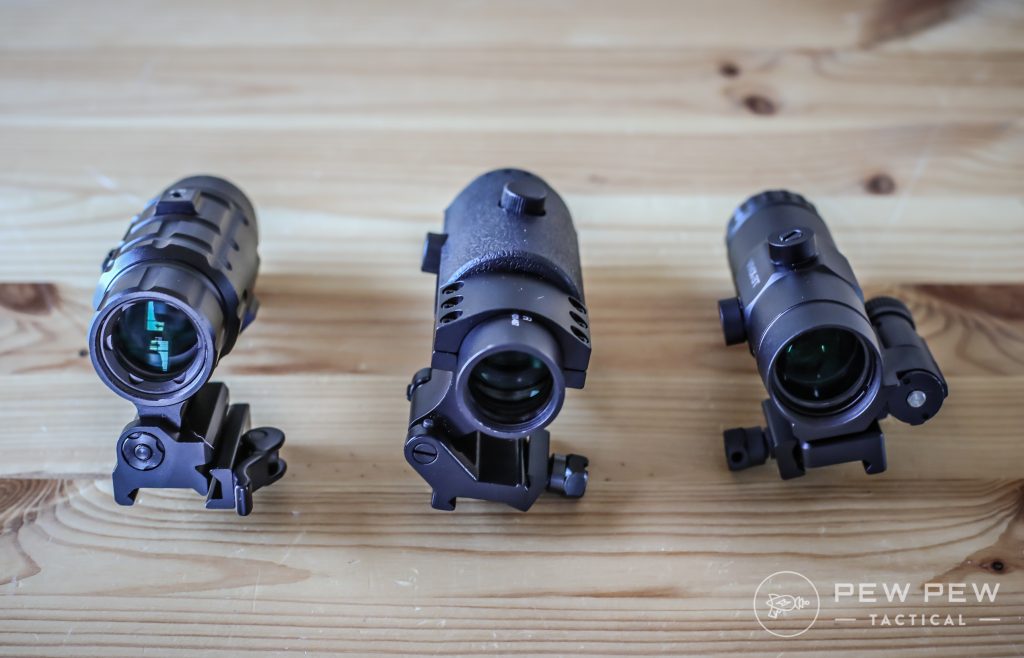
The downside to a magnifier is that it has to be the same height as your red dot…and most magnifiers are designed for AR heights.
Magnifiers also take away the lightweight, and compact advantage red dots offer. Oh, and they’re only set to one level of magnification.
You can get a 2X screw-on device, or flip off magnifiers in 3x or 6x, but your only option is that one level of magnification your magnifier is set at.
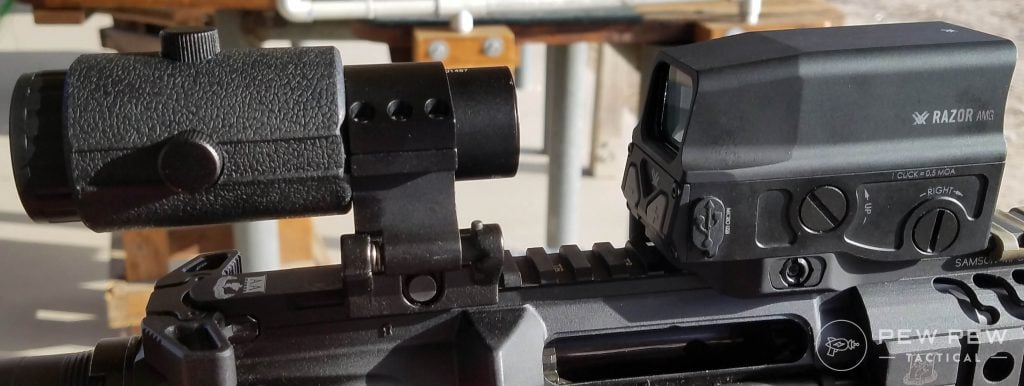
Magnifiers do help quite a bit for extended range shooting, but the simple red dot reticle is nowhere near as diverse as a proper optic reticle.
With magnifiers you lose ballistic bullet drop reticles and windage adjustments you’ll find on optics dedicated to longer ranges.
Unfortunately, they also take away some of the advantages of a red dot.
With a magnifier in place, you have the downsides of a traditional optic. This includes a set eye relief and eye box, and on top of that, your ability to co-witness with iron sights is gone.
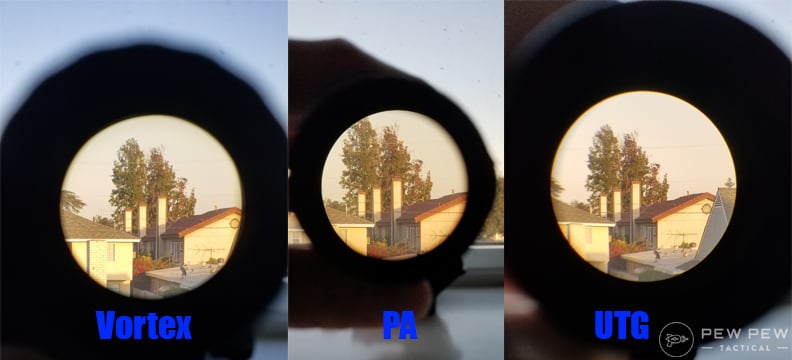
Magnifier Pros
- Extends your ability to identify targets and hit small targets
- Can be flipped on or off quickly for easy use
Magnifier Cons
- Increases the size and weight of your setup
- Gives you only one level of magnification
- Increases cost significantly
When Should I Use a Red Dot?
Obviously, red dots are best used in close and personal encounters like home defense.
If you need something fast, lightweight, and straightforward to use…red dot’s your guy.
They’re also great on lightweight guns like PCCs where their range is limited by the nature of their cartridge.
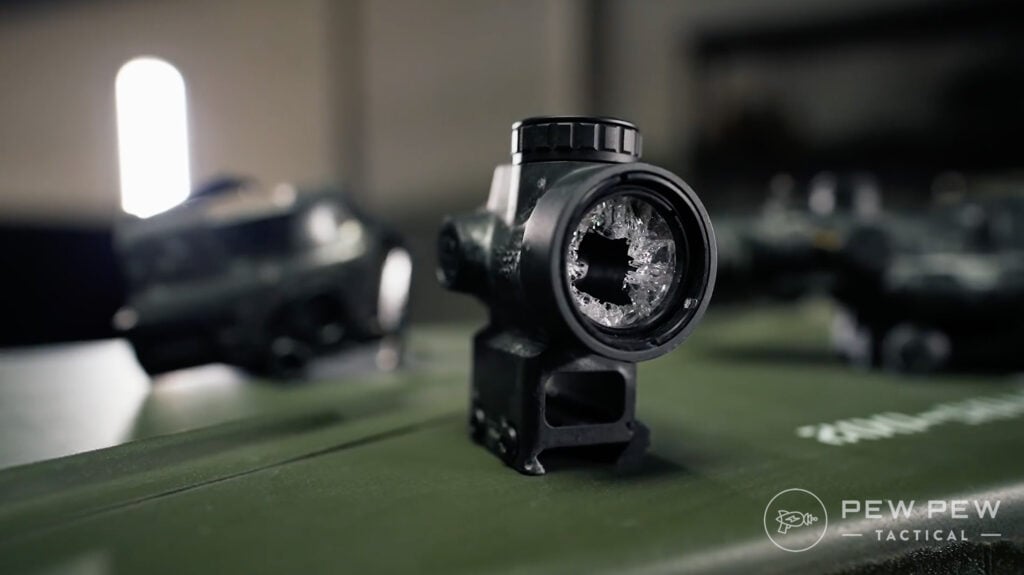
Best Red Dots
1. Aimpoint Comp M4 [Premium-Grade]
The choice of the US Army and numerous law enforcement agencies is the Comp M4. It’s one of the most rugged sights on the market.
It can be submerged, beaten, and thrown…and still work.
The Comp M4 is a full-sized red dot well suited for magnifier use.
Prices accurate at time of writing
Prices accurate at time of writing
-
25% off all OAKLEY products - OAKLEY25
Copied! Visit Merchant
2. SIG Romeo5 [Affordable]
The SIG Romeo5 is one of the best deals on the market! For less than $150, you can get a great red dot for a good price.
It’s reliable, robust, compact, and lightweight.
Not to mention it offers an impressive 40K hour battery life and motion-sensing MOTAC technology for instant-on access.
Prices accurate at time of writing
Prices accurate at time of writing
-
25% off all OAKLEY products - OAKLEY25
Copied! Visit Merchant
3. Bushnell TRS 25 [Broke-Grade]
The TRS 25 proves that a red dot can come in under $100 and still be useable. It can be had for as low as $50 if you price watch, but rarely more than $80.
This compact red dot sight isn’t fancy, but it works.
The RS 25 won’t fall apart, and it holds zero.
Prices accurate at time of writing
Prices accurate at time of writing
-
25% off all OAKLEY products - OAKLEY25
Copied! Visit Merchant
Prism Sights
Prism sights are fixed power sights with a relatively low magnification level.
They range in magnification from none at 1x to 6x, on average.
The most famous of these sights is the Trijicon ACOG, which is an excellent optic issued by both the United States Army and United States Marine Corps.
Prices accurate at time of writing
Prices accurate at time of writing
-
25% off all OAKLEY products - OAKLEY25
Copied! Visit Merchant
Prism sights measure quite small for a magnified optic.
Not as tiny as a red dot, but much smaller than a traditional variable optic.
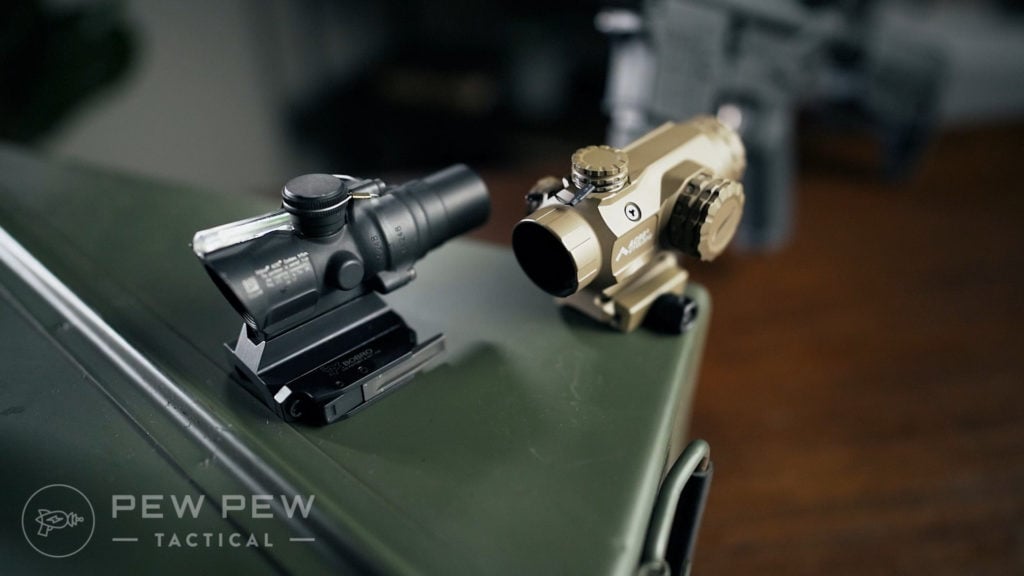
On a rifle, prism sights have a downright tiny footprint!
They are also tough as hell. (See our torture test!)
Ultimately, the simplicity of prisms makes them hard to break.
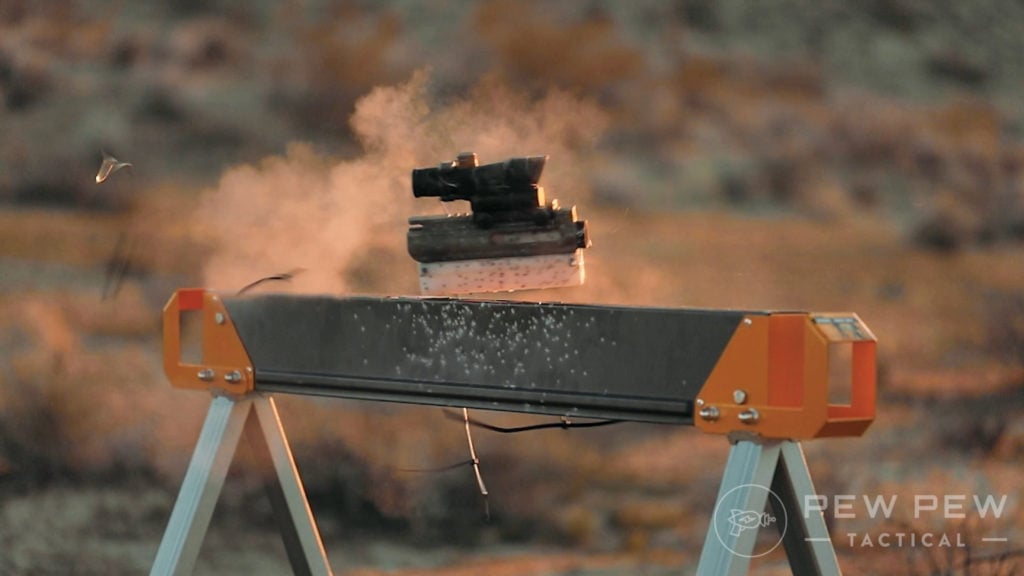
On top of that, these optics have an etched reticle.
The benefit here is if the electronics fail or the battery dies, the reticle is still visible and easy to use.
But reticles can also be complicated and more robust, compared to a red dot and a magnifier.
The ACSS reticle from Primary Arms is an excellent example of how sturdy and useful a prism reticle can be.
Prices accurate at time of writing
Prices accurate at time of writing
-
25% off all OAKLEY products - OAKLEY25
Copied! Visit Merchant
1x prism sights seem silly, but for shooters with astigmatism, a prism sight works much better than a red dot.
The Vortex Spitfire prism scope, for example, gives you a three-circle reticle that is just as simple as a red dot — but more friendly for astigmatism.
Prices accurate at time of writing
Prices accurate at time of writing
-
25% off all OAKLEY products - OAKLEY25
Copied! Visit Merchant
The tradeoff is a smaller, tougher optic stuck at one level of magnification.
Some magnification allows you to identify targets and see smaller targets, but you’re limited on what you can do with it.
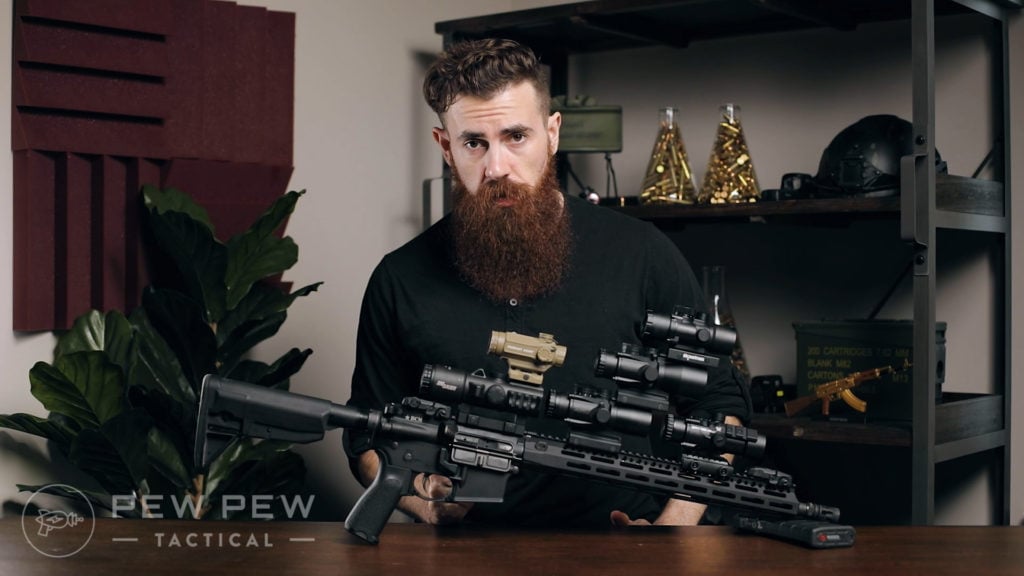
Another downside? Close quarters shooting with any of the magnified optics can be tricky.
In the USMC, we trained to shoot with both eyes opened, swapping focus from one eye to the other depending on what we were doing.
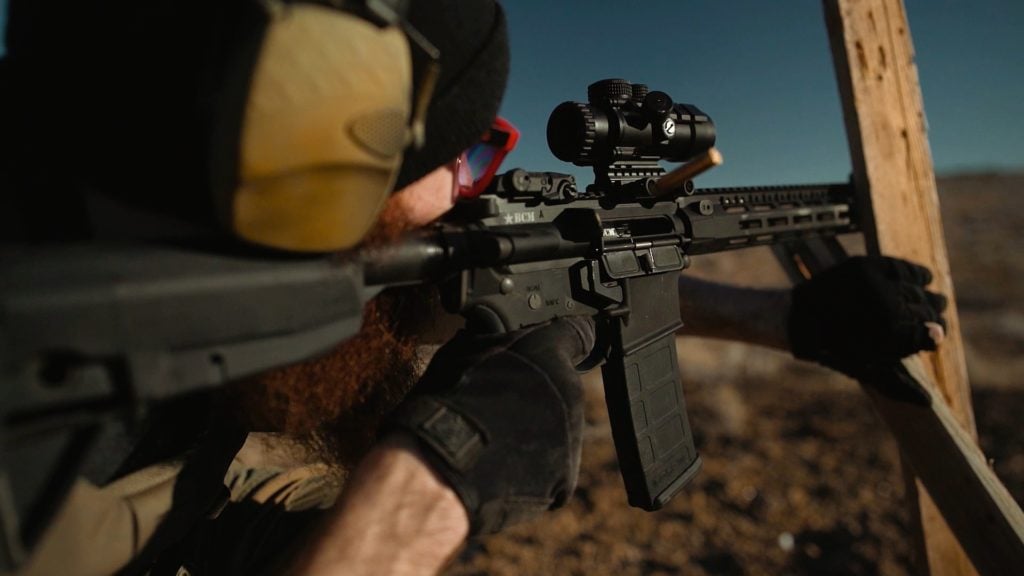
For close-quarters shooting, we focused our non-dominant eye, and the reticle became superimposed over our target.
It works like a red dot and can be useful, but is nowhere near as instinctive or as easy as a red dot.
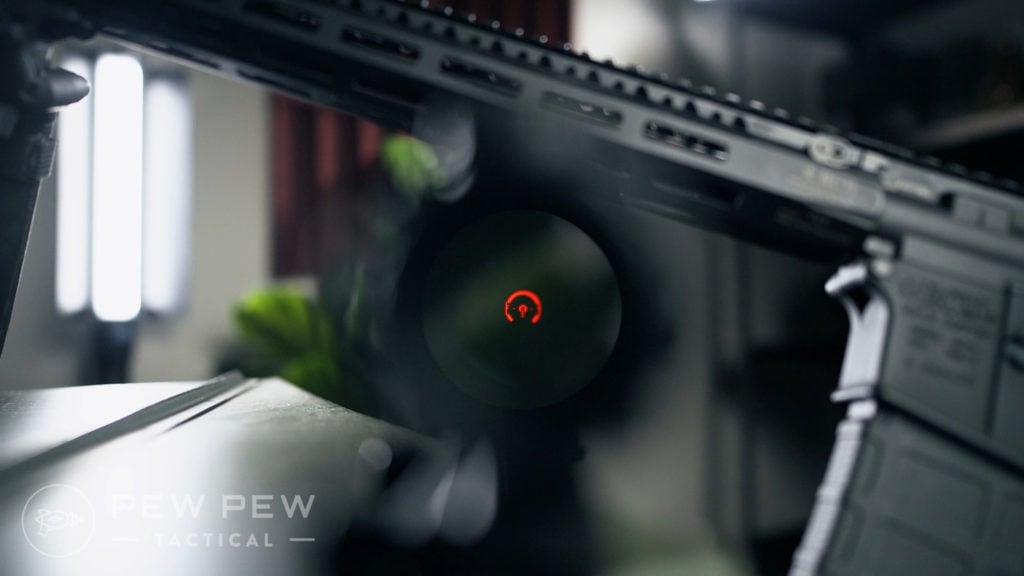
With a 2.5x to 4x optic, this is an okay solution, but with 5x and 6x optics, it gets a little harder.
You also can’t co-witness with iron sights with a magnified prism scope.
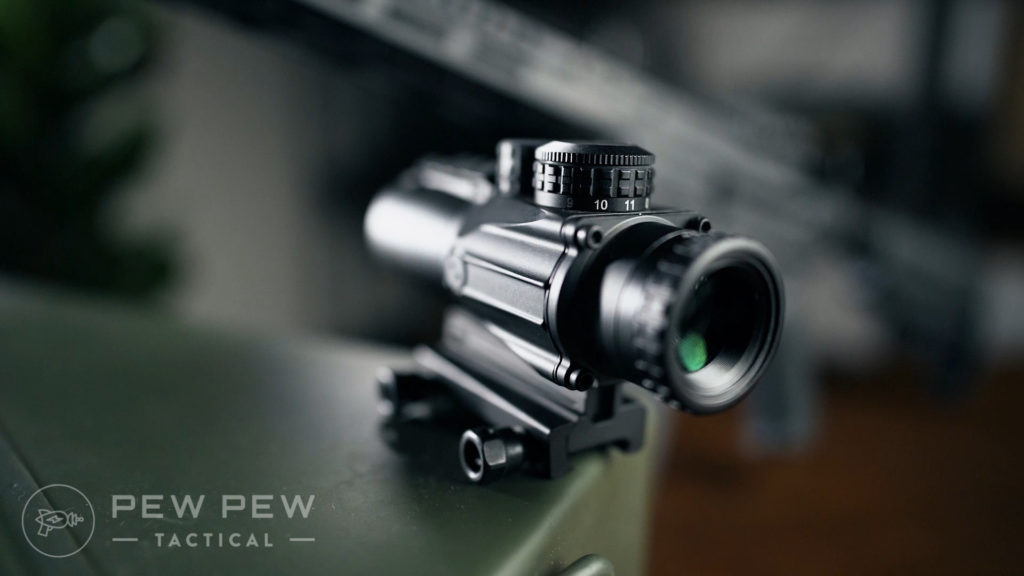
A lot of prism optics allow you to mount a red dot to the optic as a backup option and for close-quarters shooting.
Prism Pros
- Extremely durable
- Compact
- Allow for complicated reticles
- Work without batteries
- Perfect for those with astigmatism
- Magnified variants are ideal for use within 300 yards.
- Robust reticles for bullet drop and windage.
Prism Cons
- One magnification setting
- Tricky to use for close-quarters shooting
When Should I Use a Prism?
Prism sights are great for rifles that you know will be used at a particular range.
They can also keep your gun nice and light. Simply put, they’re an excellent choice for short carbines.
Prism sights tend to be super sturdy and great for rifles that might get beat up during use.
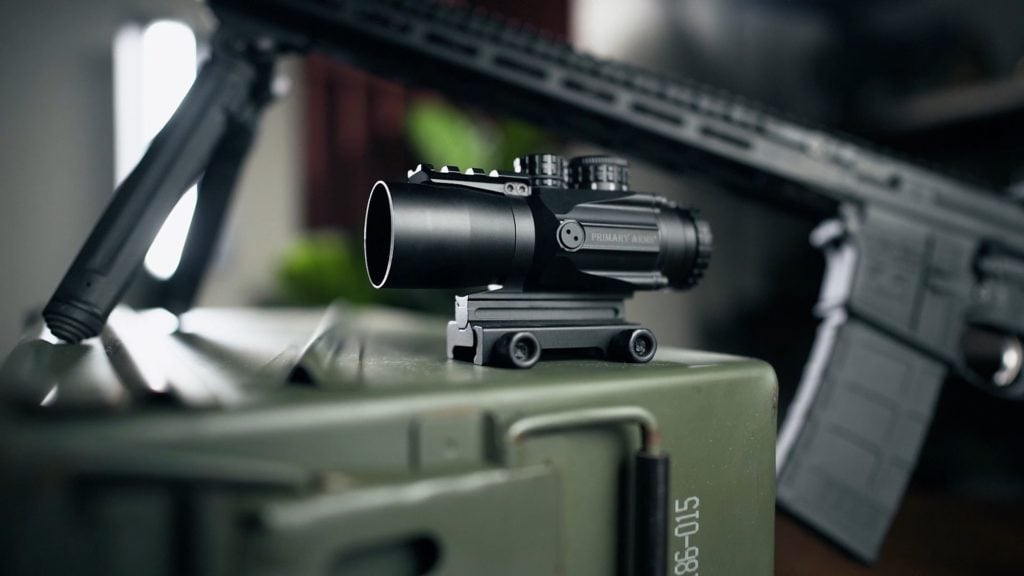
Best Prism Sights
1. Trijicon ACOG [Premium Grade]
Any ACOG is guaranteed to be a tough piece of gear. I used one for years as a Marine, and they never let me down.
ACOGs are rock-solid, reliable, and incredibly useful on a variety of rifles.
The battery-free illumination method is fantastic, and the BDCs are dead on.
With a variety of magnification ratings to choose, 4X tends to be the standard.
Prices accurate at time of writing
Prices accurate at time of writing
-
25% off all OAKLEY products - OAKLEY25
Copied! Visit Merchant
2. Browe Combat Optic [Feature-Packed]
Take everything that makes an ACOG great and then improve it a bit, and you have the Browe Combat Optics.
The BCO is battery powered and built to be just as tough as an ACOG.
One of the coolest features? The reticle adjusts in brightness based on what you are looking at versus where you are standing.
Prices accurate at time of writing
Prices accurate at time of writing
-
25% off all OAKLEY products - OAKLEY25
Copied! Visit Merchant
3. Primary Arms SLx 3 Compact Gen 2 Prism Scope [Affodable]
Primary Arms needs to shorten the name of their optic, like a lot.
Regardless, the SLx 3 is a 3x optic that comes in several different reticle options.
Personally, the ACSS for 5.56 is my favorite, and it’s also the most common.
This sturdy little scope is crazy affordable and very well made.
Prices accurate at time of writing
Prices accurate at time of writing
-
25% off all OAKLEY products - OAKLEY25
Copied! Visit Merchant
Low Powered Variable Optics (LPVO)
As far as these three types of optics go, LPVO type optics are the youngest of the bunch.
Red dots and prism scopes have been around for quite some time, but LPVOs are taking the market by storm.
These optics commonly feature magnification levels that range from 1-4x all the way to 1-10x.
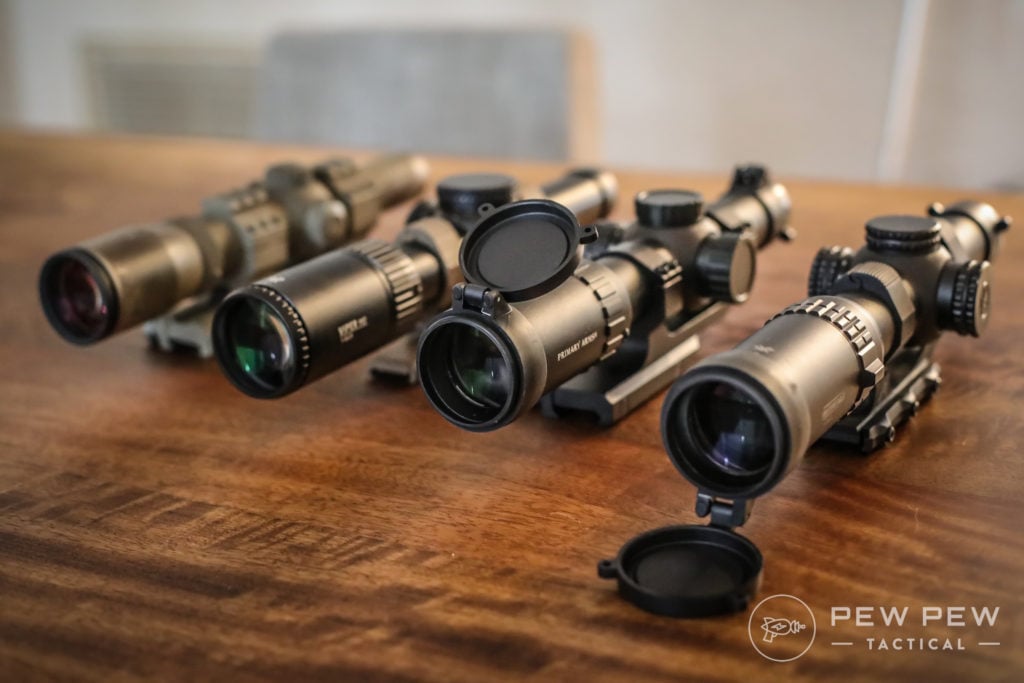
Why the hype?
LVPOs give you options — lots and lots of options.
At 1x, you can use the optic in close quarters, shooting with ease.
If, all of a sudden, a target appears further away (or even moderately far away) dial up the magnification to engage.
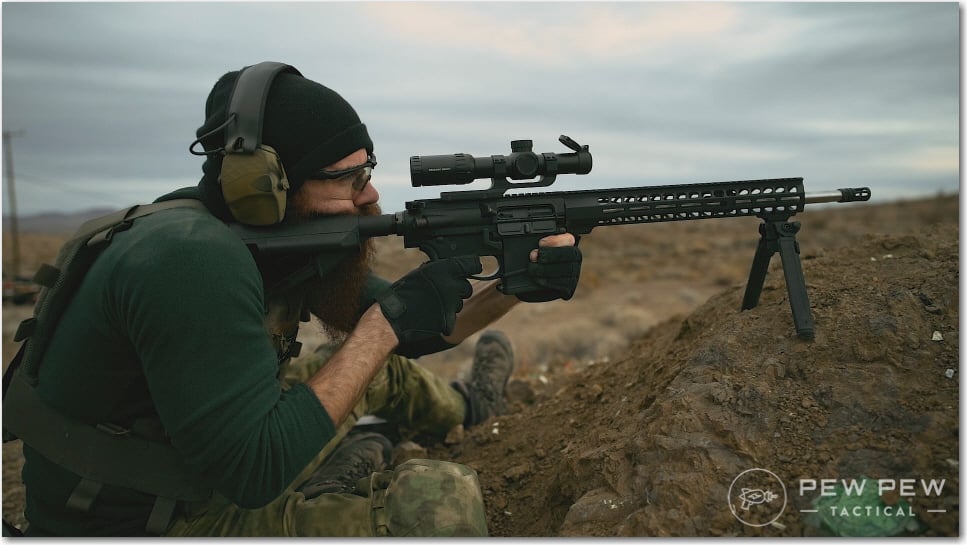
LVPOs are incredibly popular for 3-Gun competitions where shooters go from point-blank range shots to targets 100+ yards away.
These optics also offer tactical applications.
Magnification allows you to be more precise and to hit smaller targets.
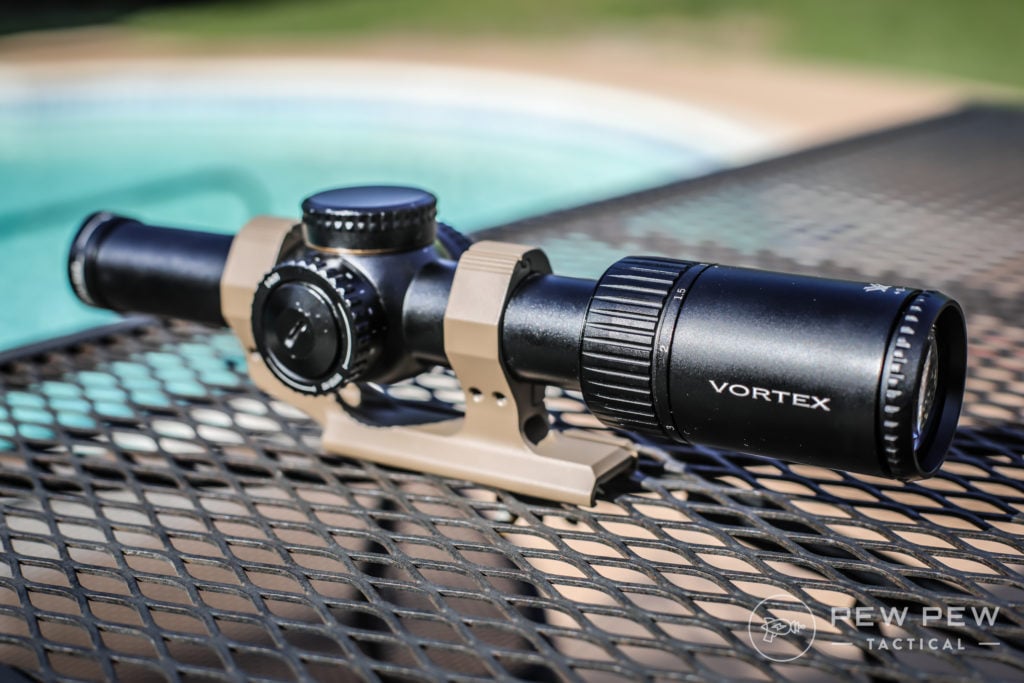
Extra magnification allows for target identification. Positive Identification, or PID, is absolutely necessary in the police and military world.
LPVOs can also feature well-designed reticles for different calibers and holdovers, and these are etched reticles as well.
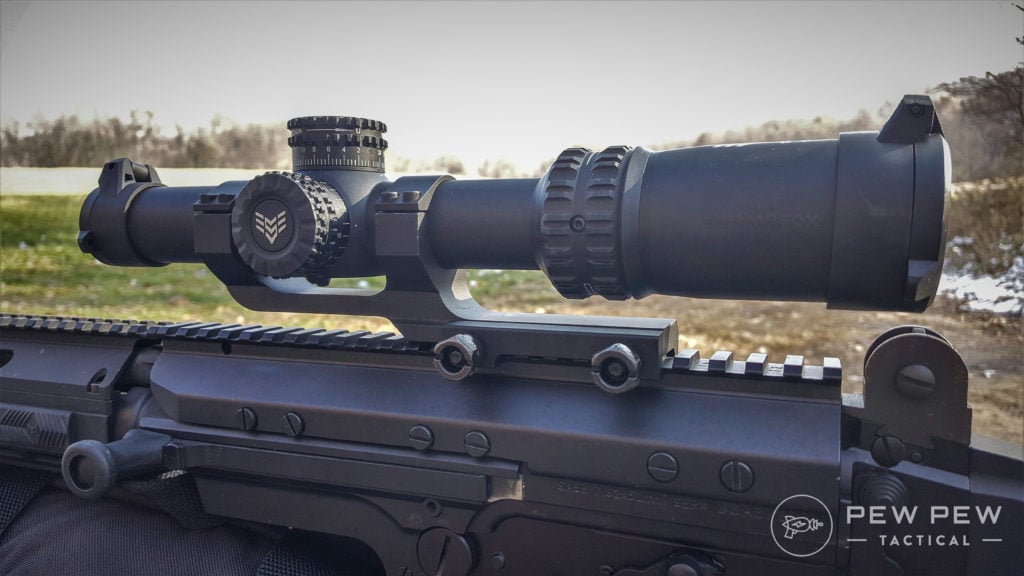
So what’s the downside to this rad design?
Compared to a prism sight, they aren’t as durable.
Their variable nature makes them a bit more fragile due to the more complicated design.
They are also the largest of these optics and take up much more room than a red dot or prism sight.
CQB shooting with both eyes opened is easy, but a red dot is still faster.
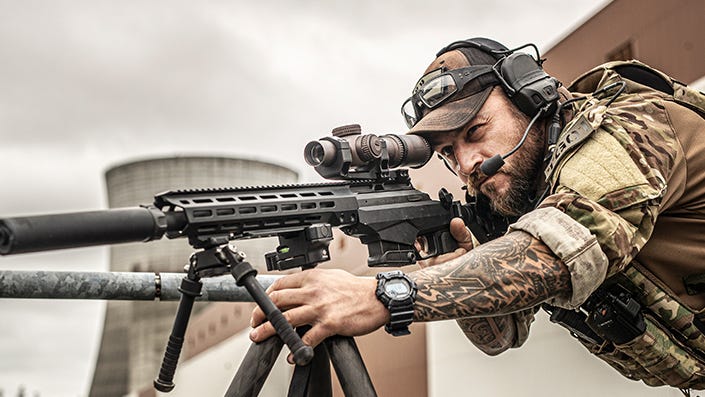
With an LPVO, you still have to compensate for the eye box and the eye relief to get a good sight picture.
Additionally, the focal plane can make a big difference for bullet drop.
With a first focal plane LPVO, the magnification doesn’t matter.
With a second focal plane, the bullet drop and windage are typically only truly accurate at the highest level of magnification.
FFP optics tend to be more expensive than SFP optics.
LPVO Pros
- Extremely versatile due to variable magnification
- Useful reticle aplenty
- Well suited for competition, hunting, and tactical use
- You can accurately engage a target from 10 feet to 300 yards
LPVO Cons
- Largest of the optics on this list
- Not as tough as red dots or prism scopes
- Not as fast on target as a red dot
When Should I Use an LVPO?
An LVPO is perfect for outdoor use of your rifle — think hunting, competition, police work, or prepping.
While it can be used up close and personal, it’s not the best option for that role.
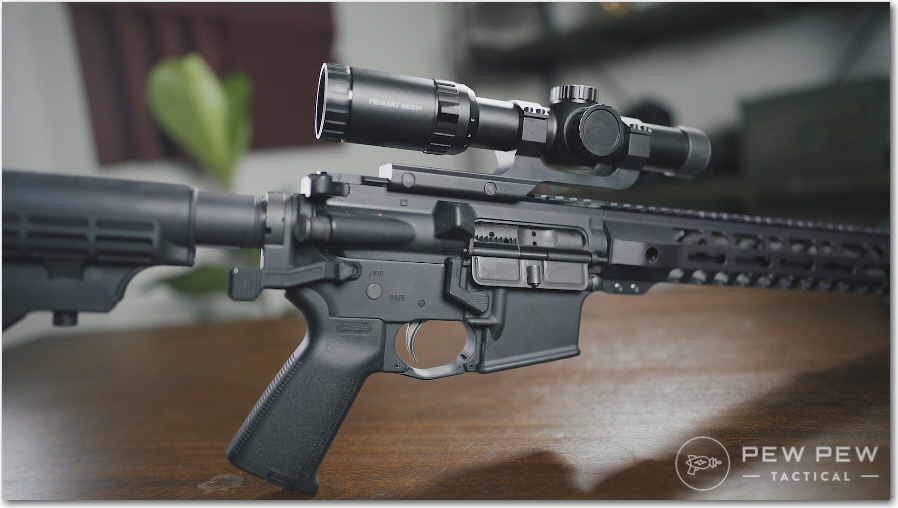
Best LVPOs
1. Vortex Optics Razor HD Gen II [Premium-Grade]
The Razor is a high-end optic and one of the best 1-6s on the market that’s priced under $2,000.
Vortex’s Gen 2 is lighter by about half a pound, but still provides the same level of durability and robust construction.
The image through this bad boy is absolutely gorgeous. Real talk, this optic makes it hard to go back to more affordable options.
Prices accurate at time of writing
Prices accurate at time of writing
-
25% off all OAKLEY products - OAKLEY25
Copied! Visit Merchant
2. Primary Arms 1-6x Gen 3 [Budget-Grade]
Primary Arms is easily the best scope company when it comes to budget options.
And the 1-6x SLx line is fantastic. Equipped with the always awesome ACSS reticle, holdovers work with 5.56, 5.45, and 308.
The scopes are clear, well built, and will last for quite some time.
It’s the perfect LPVO for budget-minded shooters.
Prices accurate at time of writing
Prices accurate at time of writing
-
25% off all OAKLEY products - OAKLEY25
Copied! Visit Merchant
3. Bushnell AR 1-4x Drop Zone Reticle [Broke-Grade]
Bushnell makes okay budget optics that are ultra-affordable.
The AR line is a simple series that can be had for about $150.
I’ve had mine for a few years, and it’s been an impressive optic. I purchased it for less than a $100 on sale, and it’s been rocking and rolling on a few different guns.
If you aren’t sure you want an LPVO and want to try one out, wait until one of these goes on sale and snatch it up.
Prices accurate at time of writing
Prices accurate at time of writing
-
25% off all OAKLEY products - OAKLEY25
Copied! Visit Merchant
Conclusion
Finding the right optic really depends on first defining the task. Close quarters home defense shooting works best with a red dot while longer range shooting, like in competition, might dictate a prism or LVPO.
Knowing what you intend to use the optic for will help you narrow down the options, leading you to the perfect optic for your setup.
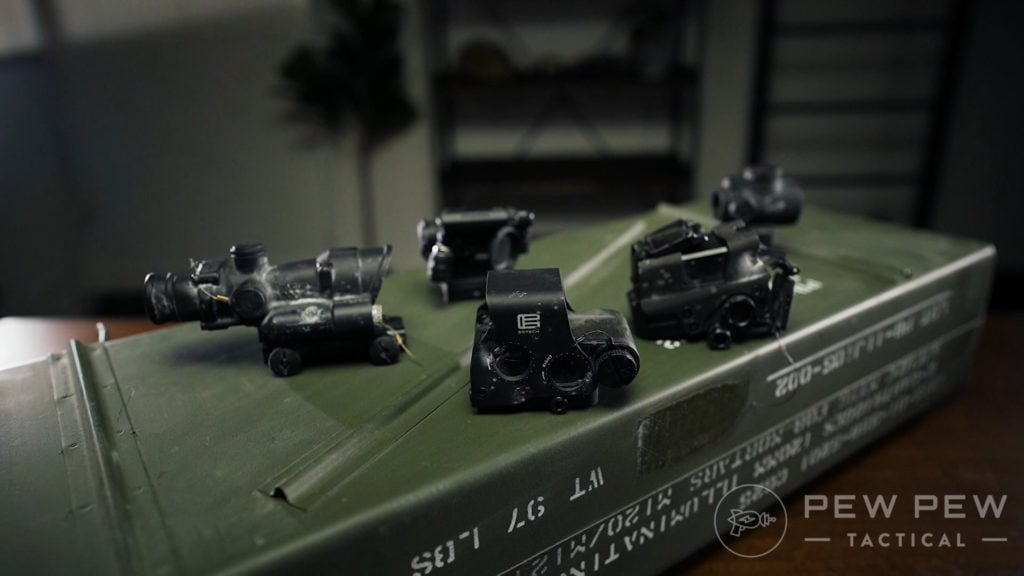
What optics do you run? Better yet, why? Tell us all about it in the comments section! For more great AR options? Head over to the Best AR-15 Scopes and Optics where we go through everything from red dots to magnified options.

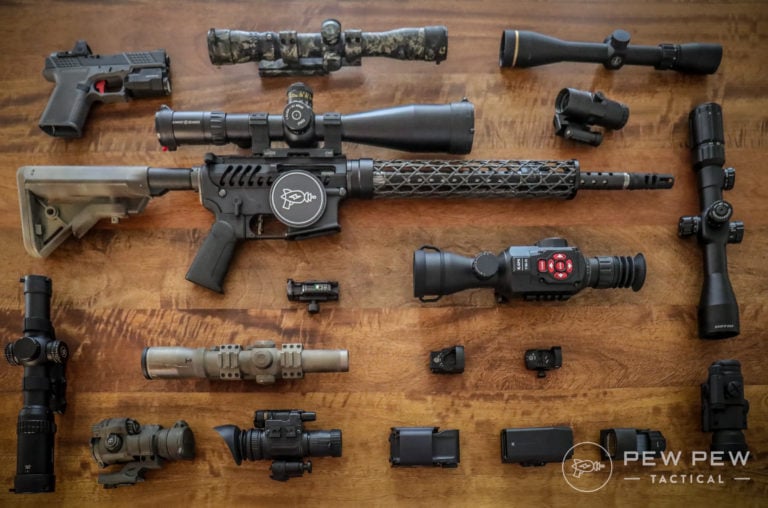
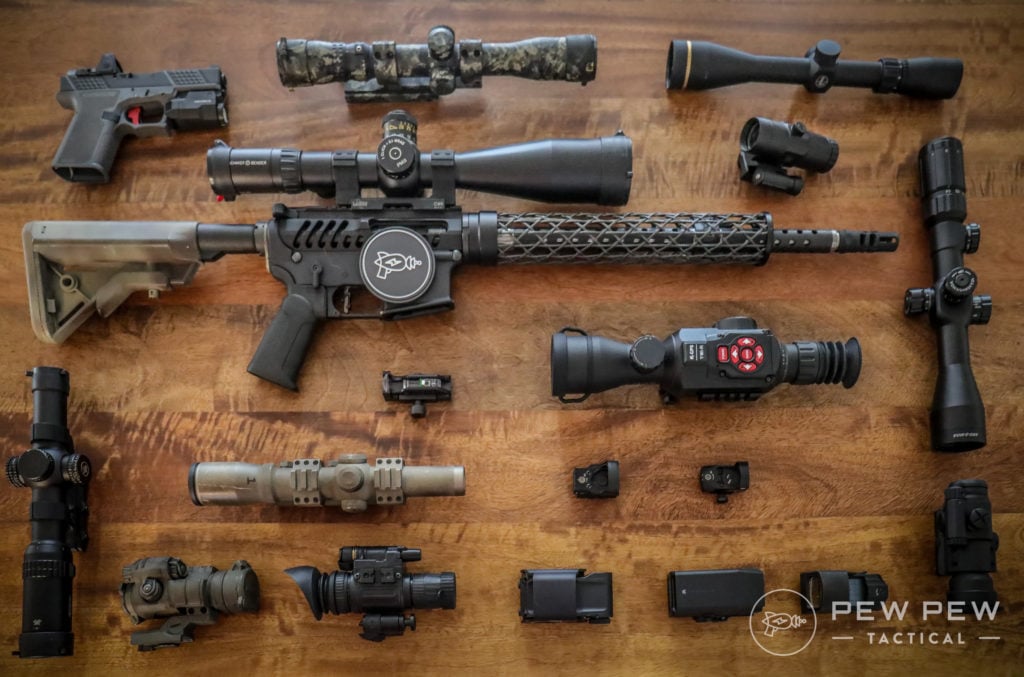

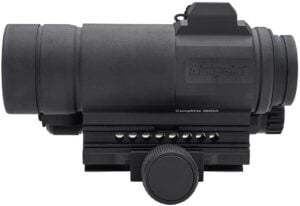
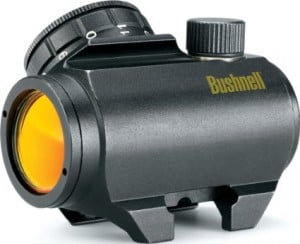
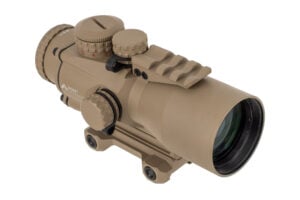
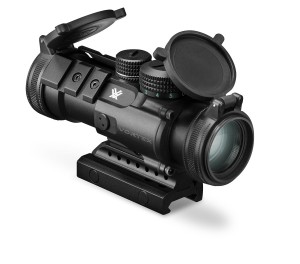
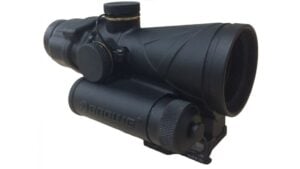
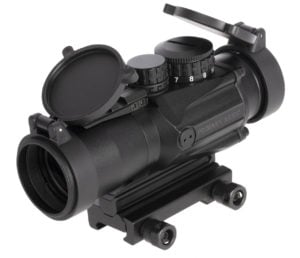
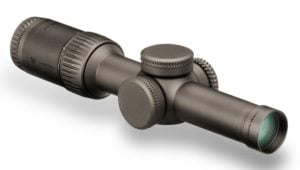

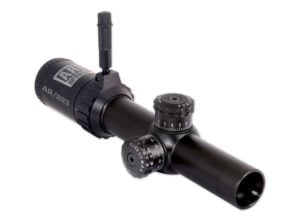



6 Leave a Reply
i really like this article. As a person new to using scopes on rifles, i was forced to only use iron sights growing up. That said im looking to getting my first ar and im torn between a red dot sight and a lvpo for an urban shtf situation. my question is, in a firefight situation is it practical to take down targets at cq engagements and then after my immediate surroundings are clear, change scopes to something with a bit longer range. how time consuming and practical is that?
Will, I've never been in a firefight though I have survived a few critical incidents where shots were fired in anger. I can tell you in the scenario you've created, training is going to be crucial. Recently, I've seen LPVOs with offset red dots mounted to the side. This is another great alternative that allows for quick conversion to CQB distances without adjusting your LPVO magnification. I also dig the relative size of a dot and magnifier, but appreciate the range of magnification on the LPVO. Neither are time-consuming to deploy as it can be done in a matter of seconds, or less.
arguing which is better red dot with magnifier or lpvo is like arguing which is better mlok or keymod
everybody already knows which is better
Lol
Yeah. Eotech holographic + magnifier is best.
no bravo5?